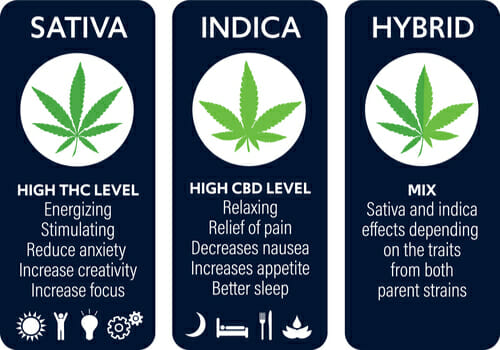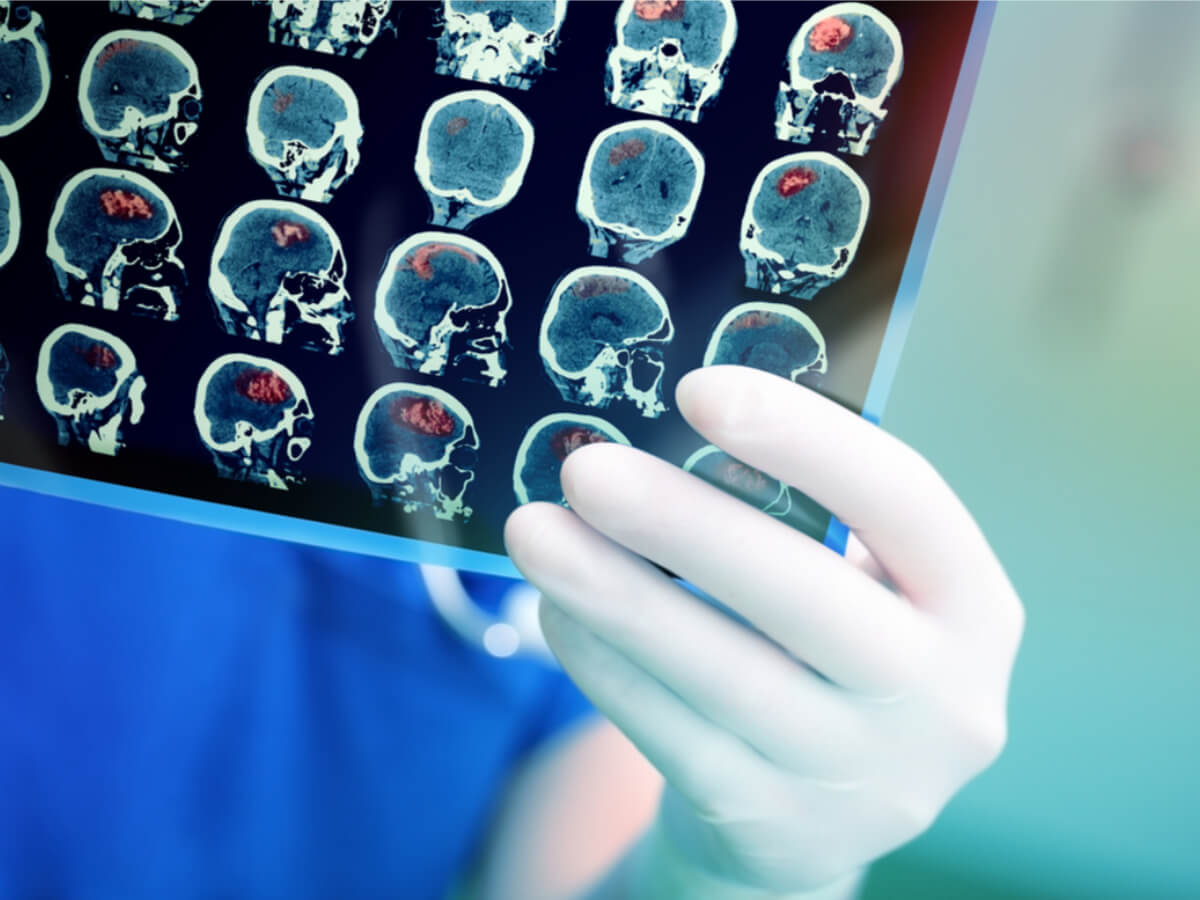It is believed that one billion people around the world are affected by migraines, including 39 million people in the United States. In fact, migraine is the third most common illness in the entire world.
People who don’t experience migraines might assume they are just really bad headaches. Those who have migraine attacks, though, know that the symptoms of migraines can be completely debilitating.

Some migraine patients aren’t interested in dealing with the side effects of migraine medication. For these individuals, it might be interesting to learn about the potential benefits of marijuana for migraines.
Let’s take a look at what you need to know.
What Are Migraines?
Migraines are frequently characterized by headaches that are debilitating and intense. This is a neurological condition that can present symptoms including:
- Vomiting
- Nausea
- Sensitivity to light and sound
- Numbness or tingling
Migraines can affect people of all ages. It is common for this condition to run in families.
Doctors diagnose migraines based on symptoms and a patient’s clinical history. On top of that, they diagnose migraines by ruling out other potential causes.
Some people might not experience migraines until early adulthood. Others might experience them in childhood.
It is more common for women to have migraines than for men to have migraines. One of the most common risk factors this condition is family history.
Chemical Components of Medical Cannabis
Cannabis contains active compounds that are known as cannabinoids. The two most prevalent cannabinoids and marijuana are tetrahydrocannabinol (THC) and cannabidiol (CBD).

THC is the compound that is associated with the mind-altering effects of cannabis. CBD, on the other hand, doesn’t induce altered perception.
Both of these cannabinoids are increasingly being researched for their potential health effects. There have been strict laws that have surrounded cannabis use and research for many decades. For this reason, the field of cannabis research is still fairly young.
Laws dealing with marijuana have been changing throughout the country in the last few decades, though. Because of this, there is a growing body of research discussing the potential therapeutic effects of cannabis as a whole as well as specific cannabinoids.
More than half of the states in the U.S. allow for the use of medical marijuana for certain qualifying medical conditions. However, which conditions qualify an individual for use of cannabis varies by state. To help you learn whether or not you might qualify for an ID card in Pennsylvania, take a look at this list of qualifying medical conditions.
Medical Marijuana For Migraines: The Research
So far, small studies have been conducted that look at the potential impact of medical cannabis on migraines as well as other forms of headaches. These studies have suggested that cannabis might help to improve these conditions.
One of the bigger studies that have been conducted included 121 adults who experience migraines. In this study, they used several forms of medical cannabis in addition to migraine medications.
Out of the group of study participants, 19.8% of them found that their frequency of migraines decreased. 11.6% of participants found that acute migraine attacks improved. Another 11.6% of participants experience side effects of medical cannabis.
The most common side effects that participants experience is with difficulty controlling the intensity and timing of cannabis as well as tiredness.
Let’s take a look at some of the other studies that have looked into the potential benefits of marijuana for migraines.
It’s Possible That Endocannabinoid Deficiency Could Lead to Migraines
It’s important to understand that some the field of marijuana research is so young, there are many things that scientists do not understand about its potential benefits and the way it interacts with the body. However, there is one theory that migraines can actually because by having a deficiency in the endocannabinoids that are naturally produced by the body.

Our bodies have a system known as the endocannabinoid system (ECS) that performs a number of different vital functions. For example, it is responsible for regulating a large number of cognitive and physiological processes, such as:
- Memory
- Appetite
- Metabolism
- Pain sensation
- Immune response
When our bodies do not produce enough endocannabinoids in order to allow the receptors in this system to work as they should, it can lead to an imbalance that results in a long list of issues.
One hypothesis has been made by a respected cannabinoid researcher and neurologist named Ethan Russo. He theorizes thatdeficiency in endocannabinoids might result in certain types of chronic conditions. These include irritable bowel syndrome, fibromyalgia, and perhaps even migraines.
If this theory is found to be true, then it helps us understand how cannabis could help reduce migraines by stimulating the ECS.
(Are you wondering if medical marijuana can help you with anxiety? Check out this article to learn more.)
Marijuana Can Both Provide Relief During Attacks and Prevent Attacks
There have been small studies looking at whether cannabis can be preventive or abortive for migraines. So far, studies have found that it can do both.
One clinical trial found that a 200 mg daily oral dose of THC and CBD could help to prevent migraines as effectively as a 25 mg daily dose of the common migraine medication amitriptyline. The study also found that the same dose help to reduce the pain intensity by 43.5% in migraine patients as an acute treatment.
Another observational study found that daily doses of edible and inhaled medical marijuana led patients to report fewer migraine attacks each month.
There have not been any clinical trials about whether CBD on its own can help to treat migraines. However, patients have anecdotally reported that CBD can help as a preventative treatment when 30 to 50 mg doses are taken daily.
Cannabis Is Known to Be a Neuroprotectant
Cannabinoids have been found to possess many antioxidant properties through animal research. It is believed that this might mean that cannabis can limit neurological damage and alleviate symptoms from things like seizures, stroke, toxic drugs, and lack of oxygen.
It is not commonly known, but there is a patent for the medical use of cannabinoids held by the U.S. Department of Health and Human Services. This patent states that a number of neurodegenerative diseases can be prevented and treated using cannabinoids. Some of these diseases include Parkinson’s disease, Alzheimer’s disease, and HIV encephalopathy.

This information is in direct contradiction with the classification of cannabis as a Schedule I drug. This Schedule of substances is defined by the U.S. DEA as having, among other things, “no currently accepted medical use.”
If you’re interested in learning about the history of medical marijuana, take a look at this article.
How Cannabis Might Help Migraines
Our bodies produce endocannabinoids naturally. These then bind to receptors in the ECS that are located throughout the body and in the brain. Cannabinoids also bind to these receptors.
According to Dr. Jim Polston, there is an increasing amount of evidence that the endocannabinoid system can help to reduce migraine pain directly when activated by cannabinoids. This is the case both with medical cannabis and with naturally produced cannabinoids.
It is thought that cannabis can help to minimize the release of inflammatory substances and reduce inflammation in the dura mater tissue that covers the brain. Both of these are known to contribute to migraines.
Should You Use Indica or Sativa For Migraines?
If you’ve delved into the world of medical cannabis at all, you have likely learned that there are countless different strains available. Each of these strains has different tastes and can create different effects. Everyone is different, so there is some necessary experimentation when it comes to finding the cannabis strain that is most suitable for your medical needs.
That being said, all cannabis strains fall under the categories of indica, sativa, or hybrid. Determining which type of strain will be most beneficial to your symptoms can help you zero in on the strains that might be the most helpful for you.

Opinions on whether you should take indica, sativa, or a hybrid for migraines can vary greatly. If you travel back in time to 1892, the founder of John Hopkins Hospital and the father of internal medicine, Dr. Sir William Osler, stated that cannabis indica is “probably the most satisfactory [migraine] remedy.”
Indica is generally perceived as being an effective pain reliever. It also generally has a higher percentage of CBD content than sativa. Since CBD is believed to have benefits for pain, many patients prefer indica strains or indica-dominant hybrids. Indica is often considered quite relaxing and even sedating, depending on the particular strain.
Sativa, on the other hand, is typically thought to create a more creative and energetic experience. Some people will use sativa for nausea, headaches, and other conditions.
If you are a medical marijuana patient, you might want to talk to your doctor about which strains might be the best for relieving your symptoms and preventing attacks. Everyone is different, and everyone responds to different strains differently.
Finding The Right Strain Of Medical Marijuana For Your Migraine
Many medical marijuana patients find that there is a process of trial and error when it comes to finding the right cannabis strain for them. Some people even find that certain cannabis products exacerbate their symptoms while others relieve them.
Some individuals find that they are more prone to the side effects of cannabis, no matter which strain or product they use.
There are a number of factors that influence how cannabis will impact each individual. These include a person’s health, tolerance, age, weight, and genetics. This means that a strain that works well for one migraine patient might not be suitable for another. It is always best to refer to your certifying doctor to guide you.
It is worth understanding that these minor side effects are much more common for people who are inexperienced with using cannabis or when people are using larger doses.
If you have emotional or mental disorders, you’ll want to talk to your doctor before using medical marijuana.
Are You Interested in Using Marijuana For Migraines?
As you can see, there is some promising research that looks at the potentials of marijuana for migraines. In the coming years and decades, we can expect to see more studies that look at the therapeutic benefits and uses of this plant.
Unfortunately, migraines are still not very well understood. This means that they commonly go undiagnosed and untreated.
Even if you know that you experience migraines, you might be scared away by the side effects of common migraine medication.
In fact, one study from the journal Headache found that two-third of migraine patients avoided or delayed taking their prescription medication. They did so because of the associated side effects. For people who suffer from migraines, medical cannabis might provide some relief that doesn’t come along with side effects that so strongly deter them from treating their condition.If you are suffering from migraines, it’s possible that medical marijuana could help provide you with some relief. If you live in Pennsylvania and are interested in getting your medical marijuana ID card, contact us today.









